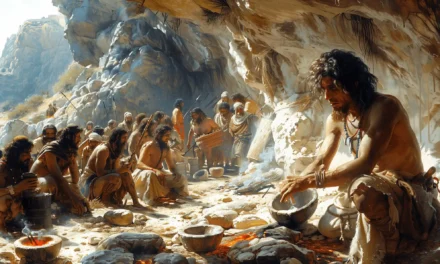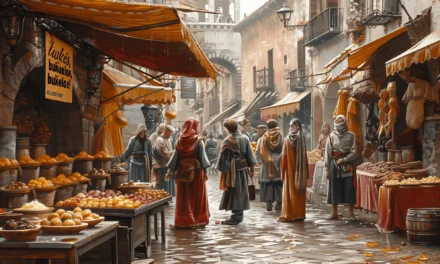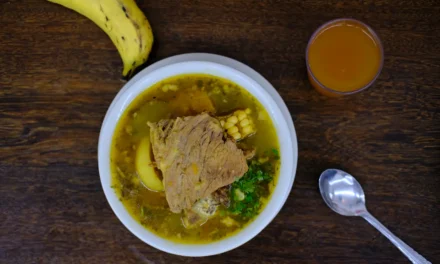Fabulous Fermentations: Enter the Land of Chicha
Chicha: Alcoholic drink that results from the fermentation of corn in sugar water and that is used in some countries of America 1.
It’s used to describe the wonderful fermented beverages in the zone around Panama and the Gulf of Urabá, akin to a bubbly recipe that originated from some of the sweetest fruits around, such as pineapple and cassava2.
From Squashed Corn to Saliva: A Deliciously Artisanal Journey
Corn was the base of the delicious beverage of the New Kingdom of Granada and Popayán, and preparing it was a delicate task. It was best to start with a somewhat squashed grain and then pop it into some big ol’ cooking pots (“mucuras”). The corn would then simmer away until it was ready to ferment for two to three days, giving it the right flavor and texture. Now, this part is important: for some groups, to make sure the final product is perfect, the women chew the corn to give it an extra special touch2.
Chicha, whose name is as sweet as a summer evening and as delightful as a freshly picked corn cob, was prepared by clever women who ground the grain with their stalwart teeth as if their mouths were a mortar and pestle. It was believed that the addition of their saliva completed the nectar-like base of the fermentation, a masterful recipe that has been passed down from one generation to the next.
Spitting and Celebrating: The Unique Way to Make Chicha
There is suspicion that some varieties of red, pink, or purple pericarp corn were so selected to obtain colored beverages. The first to make this observation was Christopher Columbus, in Pania (one white and one almost black drink) (Colón, H., 1947, 225) and on the coast of Panama (white wine and red corn) (ibid., 298) (Patiño, 1990; 2012)2.
A narration made by Father Acosta in Natural History of the Indies tells that the Indians did not use corn only to make bread; they also used it to make their drinks “with which they get very drunk” this corn wine was made in different ways, being the strongest used as beer, «first moistening the corn grain until it began to sprout and then cooking it in a certain order, fermenting it, it comes out so strong (strong) that in a few sets it knocks down (Cordero, 2013) (Patiño, 1990; 2012)3.
For his part, in “Historia natural y moral de Indias,” he says that “mainly in the areas with high temperature, they had another way of making chicha, which, although quite disgusting, because they used to disintegrate the corn and saccharify the starch.” The other way of making chicha is by «chewing the corn, the women gathered around a pot or clay jar and spat into it the chewed, making yeast from what is chewed in this way and after it has been cooked and diluted in water (Cordero, 2013).
What a wild ride the Spanish had with chicha! They tried to make changes but discovered those changes were not producing the desired fermentation. Thanks to modern science, we know the missing ingredient was saliva, or more specifically, Ptyalin, an enzyme present in saliva that enables the transformation of starch into sugar necessary for the fermenting process. You could say it was the very spit that hit the fan! But what is even more impressive is how on earth did the ingenious indigenous peoples of South America figure out the reaction that saliva can cause on corn? Even today, it remains a puzzle still yet to be solved.
It should be noted the fact that the consumption of this liquid, with the frequency and abundance mentioned, made it practically unnecessary to drink water. In this way, diseases of the digestive tract caused by water pollution, which has become the stigma of tropical American populations after the Conquest, were largely avoided. An author said of the residents of Vélez in the middle of the 18th century: “Its waters are very bad and unhealthy, and that is why they all continually use the drink they call chicha” (Oviedo, 1930, 162).
Spanish Search for a Fire Hose: The Quest for a Hopeless End to Chicha Festivals.
It was like a mad dash to put out a blazing wildfire when the Spanish came around and saw the festivals where chicha was consumed. If laughter and joy could create an actual physical flame, then those villages would have been a whole lot brighter, that’s for sure. The Spanish held tight to the idea that if they couldn’t extinguish the fun, they could at least try and douse it by enforcing prohibitions and regulations. Fray Luis de Zapata made a start of it in 1576 but was met with lukewarm success. It was like they were trying to stop a raging river with a single, leaky bucket – all the while loosing the progress they had made in converting the crowds to Catholicism.
The Spanish were not about to let the Indians throw the party of their dreams (yes, there were actually parties, and unfortunately, this did not bode well for the Spaniards)! In 1582, their representative, Guillén Chaparro, realized that the only way to put a cork in this situation was to offer blankets, T-shirts, hats, or other gifts as payment for their work instead of coins – like a kid reaching for candy instead of cash you know it’s better for them to get something they can actually use instead of being able to buy the wrong things. It seems this effort wasn’t enough, however, because the Indians didn’t exactly rely on buying corn – they probably had more than enough of their own crops to brew up a batch of chicha. Of course, the situation was still far from ideal, but at least the Spanish had made an effort to nip the influence of alcohol in the bud.
Sour Swigs and Sour Punishments: Chicha Disagreement of the 1700s
In the middle of the seventeenth century, Dr. Pedro Ibáñez says, the consumption of chicha became so extensive that on different occasions, it came to seriously worry the civil and ecclesiastical authorities since it is very common for indigenous people, reduced to living in the town, arrived in a complete state of “beodez” and that many Spaniards in the town frequently imitated this behavior.
During his stint as the president of the Real Audiencia de Santa Fe de Bogotá, Don Dionisio Pérez Manrique made it his mission to tackle the age-old problem of excessive chicha consumption. Each and every person, no matter their background- be it a black, Indian, mulatto, mestizo, or even a Spaniard- was held to the same standard; the production, sale, and consumption of chicha were strictly prohibited, and those who failed to comply were heavily penalized. The fines could be as high as 200 pesos, with a few Indians, blacks, and mestizos even being given a hearty whipping.
King Fernando VI was absolutely horrified at the rate of consumption of chicha in 1752. He spoke out against it, commenting that it was like someone adding a generous helping of ingredients to soup – it was as if they wanted to make a pot so large that they would need a ladder to climb into it! He warned against adding “strange” ingredients, such as chili, salt, human bones, lime, seeds, or borrachero flowers, and urged people to avoid immoderate use.
The Crafty Combination of La Chichería
It was quite a scene! The chichería was the place to be – a bustling, exciting hang-out spot. Here, you were sure to find a bubbly cup of chicha, the corn-based frothy brew so popular during the colonial period. There was no shortage of chicherías to choose from – in neighborhoods such as Las Nieves, San Victorino, Santa Bárbara, and La Catedral.
They also stocked up on all the necessities for the homestead, from eggs and chocolate for an indulgent treat to bread for a hearty toast for breakfast, plus local delicacies for a real taste of the region. The most frequent shoppers were the indigenous people, who’d flock to market day or meander over in the evening, as well as mestizos and a few fairer-skinned folks. It was like a trip to the grocery store, with a bit of Old World color and flavor added in.
In general, it was a place for poor people whose trades – craftsmen, workers, maids, beggars, and prostitutes did not provide sufficient resources to have access to other consumption:
“In many cases, all these people went to eat a good plate of stew, a good soup, a leg of pig or porridge accompanied by its chichita. Some ate standing up on enameled plates; others sat at tables covered with rubber tablecloths” (Llano and Campuzano, 1994: 93) (Restrepo Manrique, 2005; 2009; 2012)
In the 19th century, manufacturing and consumption had been going up faster than a hot air balloon on a humid summer day. It was almost as if they had their own private party, known as “la chichería.” It was a vibrant combination of the best and worst of the population – as if a wild cocktail had been shaken and stirred. The inns of these social institutions provided the perfect backdrop, where they were lovingly cared for by folklore, traditional literature, politicians, and even the police. It was truly a sight to behold.
The proliferation of these establishments reached very high levels: in 1891, the general plan of Bogotá, a city of 70,000 inhabitants, registered 209 recognized ones, most of them located in the heart of the city, whose names (To the North Railroad, Los 9 states, The Battle of the Oratory, The Pearly Rose) evoke national yearnings and frustrations.
Pasteurized or Potent: 1948’s Battle of the Brews
With a scorching brush, the doctors applied their paint of societal hygiene, magically moving the chicherías away from the center of Bogotá. Like a wise wizard waved his wand and summoned his forces, the doctors could transport these establishments to the outskirts, allowing the city center to embrace a new era of safety. In an effort to promote a safe atmosphere, the medical authorities had no choice but to let the chicherías of the wealthy elite.
In 1949, law 34 made a big splash when it became official – it was a strict ban on any homemade corn chicha that wasn’t pasteurized and stored in glass containers. This law was widely criticized at the time, as folks accused chicha of “brutalizing” people. However, the same national government was ironically shelling out subsidies to major beer companies, practically encouraging people to imbibe.
Even though the delicious drink was prohibited by the Bejarano Law of 1948, it continues to be sipped in some rural areas and among the party-lovin’ classes of Cundinamarca and Boyacá like a liquid time warp. In La Perseverancia neighborhood of Bogotá, with its popular roots and a weekend-warrior bohemian class of the capital, the tradition of guzzling down the indigenous drink has been resurrected.




